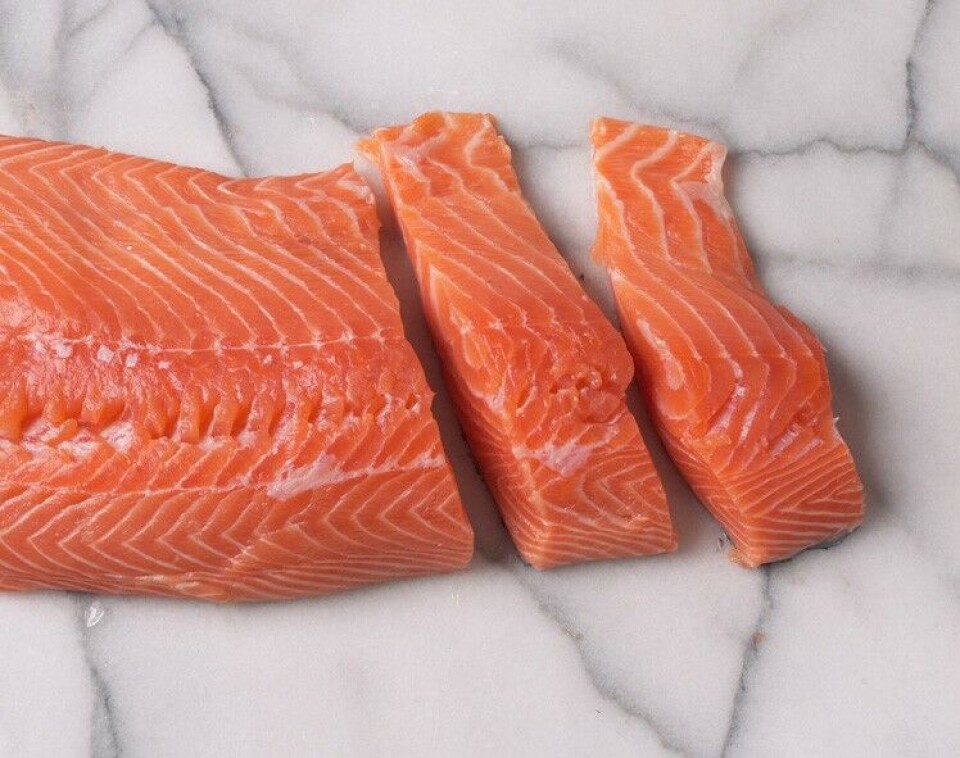
Vaccine could solve soft-flesh syndrome
Researchers exploring the host-parasite relationship of K. thyrsites and Atlantic salmon have discovered that the fish are not only able to mount an immune response and clear the infection but are also resistant to re-infection, suggesting that a vaccine against the condition could prove effective.
The results of the research studies - one of which recently published in Aquaculture, and the other which includes valuable input from Fish Farming Expert's Laura Braden - may offer a valuable insight into solving a conditon that currently costs the Canadian industry $4 million a year.
www.fishfarmingexpert.com has been given the following exclusive:
Kudoa thyrsites is a cosmopolitan myxozoan parasite that infects approximately 37 different species of marine fish. After initial infection (through the gills or skin), the parasite migrates to the muscle cells where it hides from the fish’s immune system and multiplies into millions of infective spores. After death, a change in the pH of the fish causes the parasite to release digestive proteases that liquefy the muscle tissue, thereby releasing the spores into the environment (post-mortem myoliquefaction, soft-flesh syndrome). With respect to salmon aquaculture, the infection is only apparent after the fish are market-sized and harvested. This is the only sign of infection – during the lifetime of the host, the parasite is cryptic and does not cause any detrimental pathology.
BC is currently the only location where K. thyrsites is impacting Atlantic salmon aquaculture. In 2013 an estimated $4 million CAD was lost due to the parasite, mostly in the form of discarded fillets and returns after harvest. On a whole, the industry has been aware of this issue for decades, however, very little is known regarding the host-parasite relationship. For example, researchers still do not know what the intermediate host is. Related parasites need to infect an invertebrate marine worm to complete the lifecycle, but for K. thyrsites, the identity of this worm remains a mystery.
To try and alleviate significant economic losses, BC salmon farmers have collaborated with researchers to conduct long-term studies looking to better characterize the parasite so that control and management strategies can be developed. The study, recently published in Aquaculture by Dr Simon Jones et al. (October 2015), found that salmon initially exposed to the parasite were able to resolve the infection over time. Furthermore, when re-exposed to K. thyrsites, the surviving fish were resistant to infection. This was very exciting, as it shows that there is an adaptive response by the fish host.
To explore this protective effect further, the group looked at how the immune response was functioning in response to the parasite. This part of the study (Braden et al., in prep) found that contrary to early descriptions, the fish’s immune cells were able to detect infected muscle cells and then attack and engulf the spores. Therefore, they had observed how Atlantic salmon are able to recover from infection, and because this recovery is associated with protection against subsequent infections, these studies suggest a vaccination strategy against K. thyrsites may be possible.
As mentioned, this parasite infects a wide range of hosts both in the Pacific and Atlantic oceans. In 2008, it was detected in North Sea mackerel, and anecdotal observations place the parasite in Atlantic salmon in Ireland as well as in Eastern Canada. However, these observations have not yet been confirmed. One effect of climate change is the potential for geographical expansion of organisms – including the unidentified intermediate host of K. thyrsites – as they move away from warming waters. Dr. Braden is currently assessing the population of K. thyrsites in Eastern Canada by looking for evidence of the parasite in wild mackerel populations. Surveillance of this parasite is very important as we do not yet know the lifecycle, and if it is present in Atlantic Canada, it may be a potential threat to the salmon industry.























































